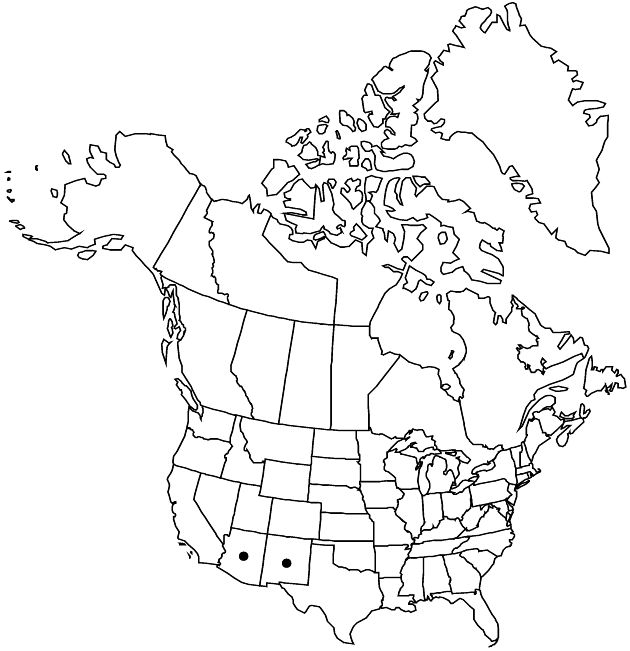Helianthus arizonensis
Brittonia 15: 266, fig. 2. 1963.
Perennials, 20–30 cm (roots creeping). Stems erect to ascending, glabrous (glaucous). Leaves cauline; opposite; sessile; blades (bluish green) lanceolate, 2–7 × 0.5–1.3 cm, bases cuneate, margins entire (undulate), faces glabrous (glaucous). Heads 1–7. Peduncles 2–7.5 cm. Involucres hemispheric, 9–18 mm diam. Phyllaries 16–19, lanceovate, 3.5–7 × 2–2.8 mm, (margins ciliate) apices acute, abaxial faces glabrate, sparingly glanddotted. Paleae 5.5–6.5 mm, 3-toothed (apices acute, glanddotted). Ray-florets 10–14; laminae 7–9 mm. Disc-florets 30+; corollas 3–3.5 mm, lobes yellow; anthers reddish-brown, appendages brownish. Cypselae 2.8–3.2 mm, glabrous; pappi of 2 deltate, erose scales 1–1.7 mm. 2n = 34, 51.
Phenology: Flowering summer–fall.
Habitat: Open pine woodlands
Elevation: 1200–2100 m
Discussion
Helianthus arizonensis is morphologically similar to the polyploid H. ciliaris; H. arizonensis is diploid (or triploid) and has entirely yellow disc corollas. It is known from relatively few sites.
Selected References
None.
